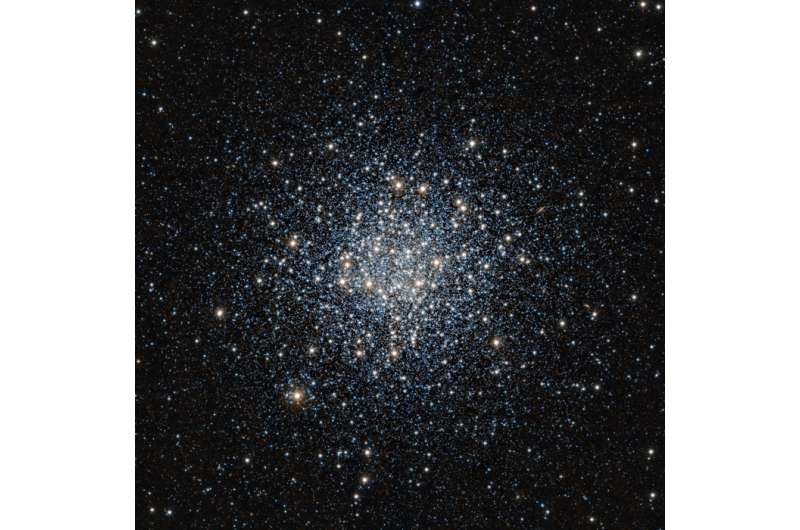How neutron stars can break up clusters

A supernova explosion at the end of a large star's life can leave the collapsed core, or neutron star, hurtling away from its dust and gas envelope at hundreds of kilometres per second. Now, astronomers have found that even a tiny number of these neutron star 'natal kicks' can have a dramatic effect on the lifetime of surrounding star clusters. The fast-moving neutron stars can cause star clusters to lose mass and break apart up to four times more quickly. The discovery will be presented by Filippo Contenta at the National Astronomy Meeting in Llandudno.
Contenta, a PhD student at the University of Surrey, said, "Astronomers have known for some time that there are two distinct scenarios for the break up of star clusters: a smooth, gradual loss and a sudden discarding of mass. You can think of it as the difference between skiing down a gentle slope and jumping off a cliff. Because the dividing line between the two modes is very sharp, it's not surprising that a very small effect can make a big difference. Our study suggests that natal kicks from neutron stars could be one of the triggers that sends star clusters into 'jumping' modes of rapid dissolution rather than the more gradual 'skiing'."
While neutron star natal kicks are known to occur, their frequency, distribution and cause are still uncertain. The high velocities from the kicks should send neutron stars beyond the gravitational pull of the star clusters they are born in. However, because the neutron stars are very hard to observe, their retention fraction in globular clusters is still unknown. Contenta and his colleagues ran a series of computer simulations of the evolution of different sized clusters, either with or without the presence of neutron star natal kicks. They found that even though neutron stars accounted for less than 2 per cent of the star cluster by mass, the presence of kicks could have a big effect on the cluster's evolution.
In particular, the presence of kicks and the 'jumping' mode of rapid mass loss meant that the clusters never achieved the high degree of central concentration of stars, observed in about 20 per cent of clusters, which is often considered to be an outcome of the process of 'core collapse'. On the other hand, all longer-lived 'skiing' models showed signatures of core collapse, a phenomenon resulting from the slow dynamical evolution of a stellar system, driven by gravitational encounters between individual stars.
"We know that multiple factors affect the rate at which star clusters lose mass," said Contenta. "But while our study has focused on kicks by neutron stars, perhaps the main lesson to learn is that apparently minor changes can have very large effects."
Provided by Royal Astronomical Society




















